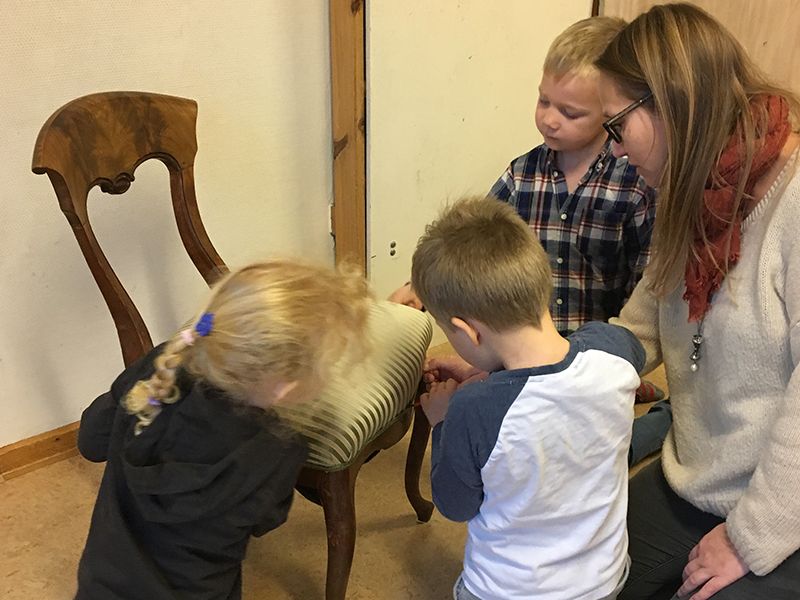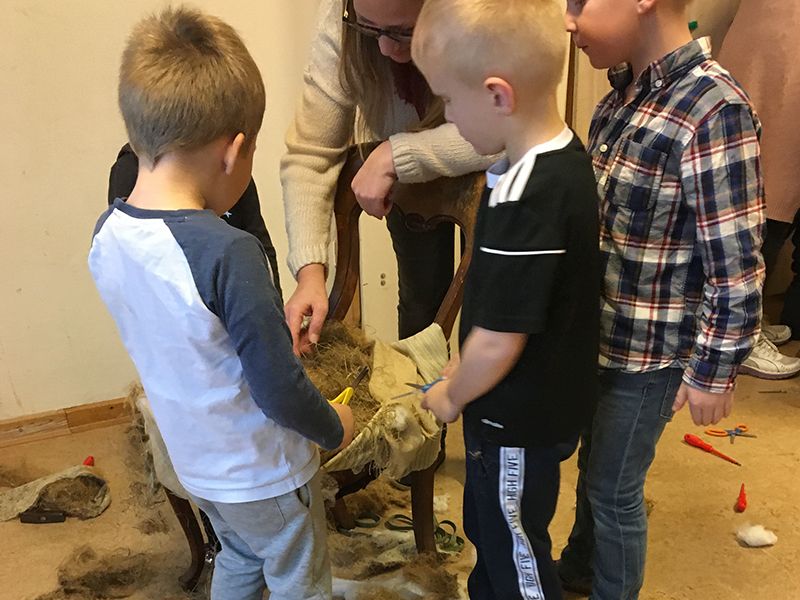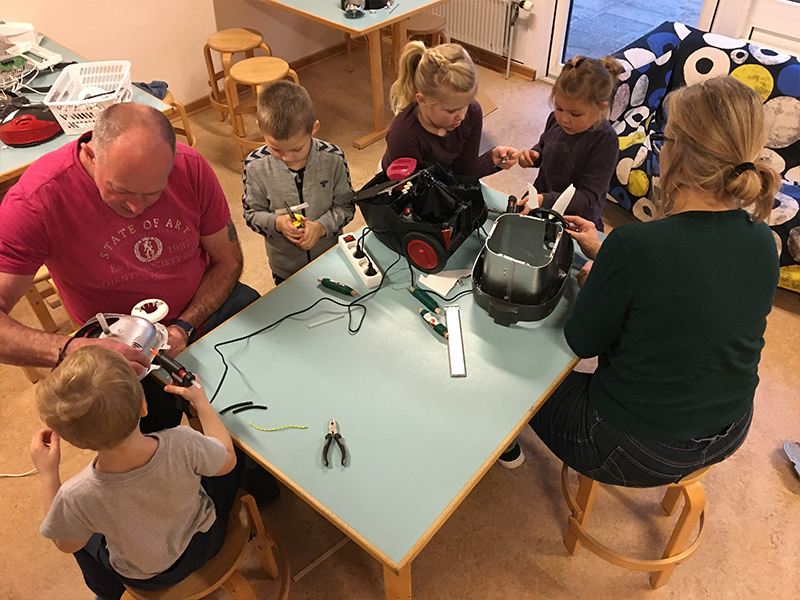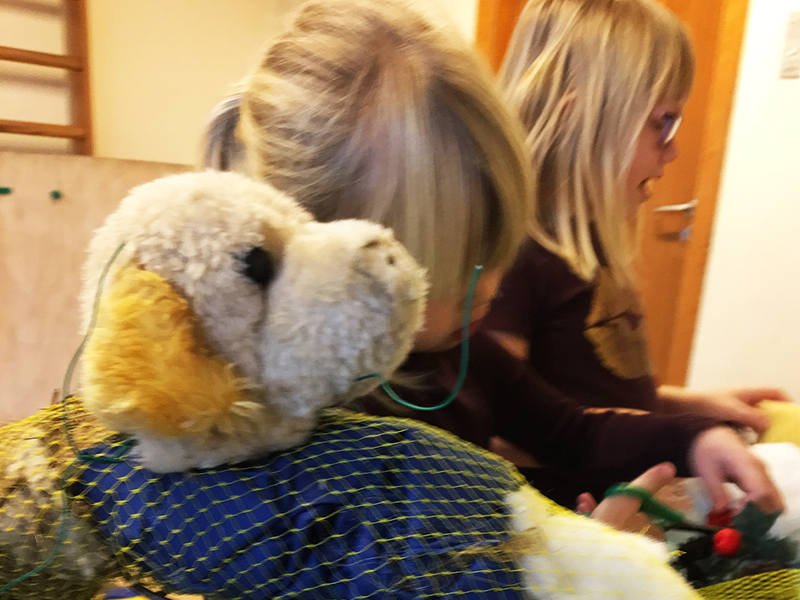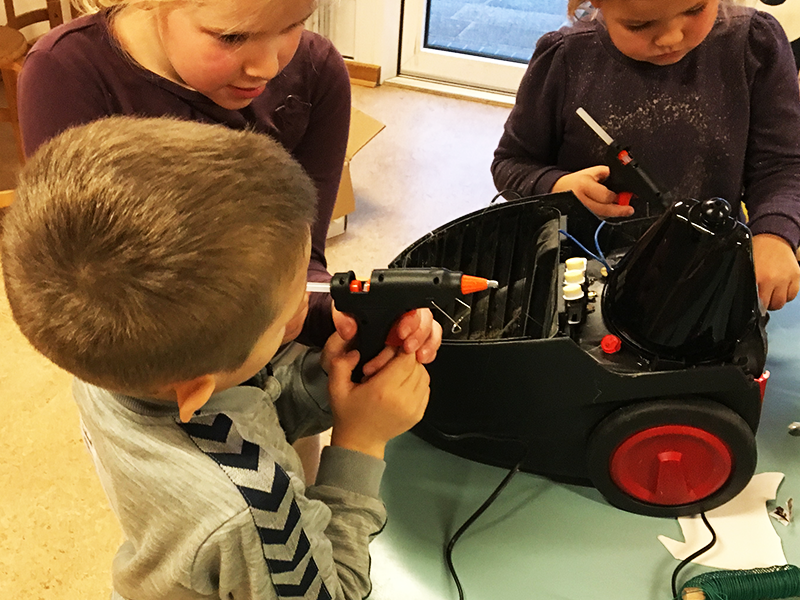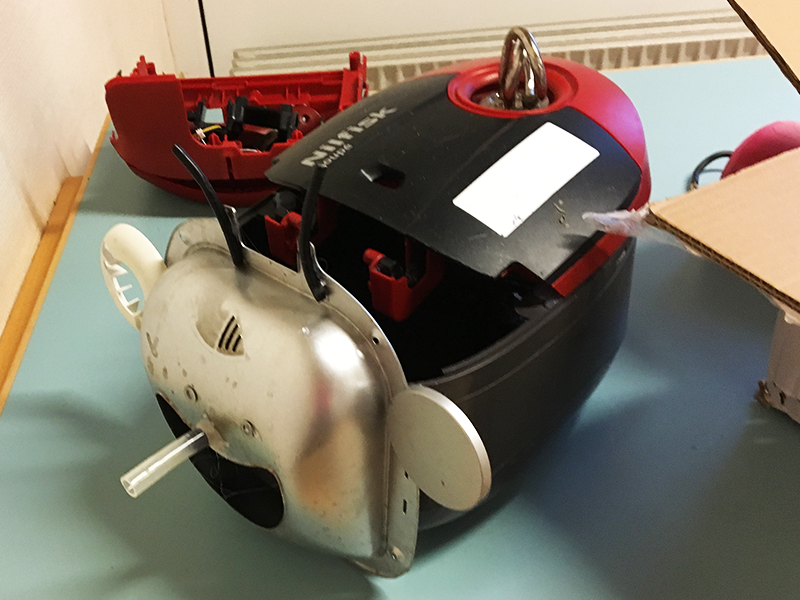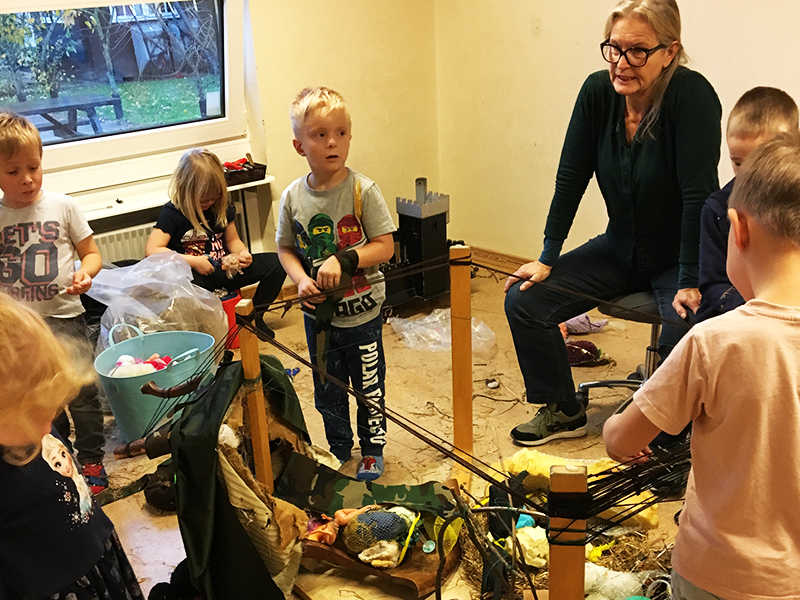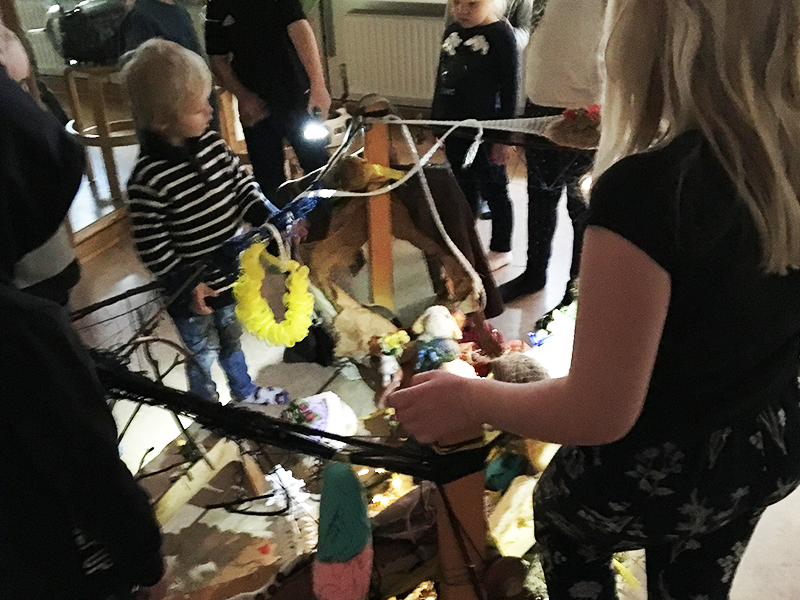STORYTELLING, ART, PLAY, EDUCATION, COMMUNITY, CO-CREATION
Region: North
Municipality: Frederikshavn
By: Dybvad
Year: 2019
Artist: Lina Franke Hedegaard
DAILY OFFER: Dybvad Kindergarten
Joint report from the staff, as the director of the kindergarten had meanwhile taken another job in another municipality.
Introduction:
Our starting point with the PlayArt activities was to keep the focus on the process and the children's perspective, and to lower the ambitions for a more finished product. The SNIP narrative talks about "we often choose the easy and safe option", but what is the safe and easy solution? It is actually that we get stuck in our safe roles, and we would like to write about that here, as LegeKunst made visible and changed our view on children's play and education.
In our kindergarten in autumn 2019, there were 40 children and 5 permanent employees, 1 daily manager, 3 educators and 1 educator assistant and 1 extra educator (due to overstaffing.)
When we worked with art and culture (before LegeKunst) we often divided ourselves into familiar roles, i.e. Lone and Ulla, who are the most creative, often sat with the children and developed creative things. Susanne, who does not feel that the creative can grow with her, always takes on the practical role (changing nappies etc), allowing space and calm for the creative activity, which often culminated in a finished product. This was not something we thought about or talked about as it worked for us to work this way with the 3-4 year olds. When we started with play art we had agreed that, ALL adults would participate in the activities and that we would share the practical tasks (e.g. changing nappies etc).
PlayArt course:
Together with the children and artist Lina Franke Hedegaard, we went on a journey around the processes of clay, sand and straw (activity phase 1). We also took apart household appliances and chairs (activity phase 2). We were keen to follow the children's tracks and in Activity Phase 1 we all experienced a sense of experimentation and exploration with the children. All the children had been given a lump of clay out in the playground and were allowed to take prints of anything they wanted or thought was interesting.
The children loved this activity. Some boys teamed up to take prints of a tyre. The tyre was run over the clay and a clear print was made. The boys ran over to Lina and got more clay for more prints. A game that lasted half an hour. Then they went out together to look for new prints.
An adult discovers that a 3-year-old girl has crumbled all her clay into small pieces in front of some wooden horses. The adult was about to tell her to put it back together and go find something to take impressions of. BUT, luckily, had time to think of the CHILD PERSPECTIVE, and asked the girl: What have you been doing? Girl: It's food for the horse, it's hungry! The adult squatted in front of the girl and praised the girl for cooking for the horse. There was another girl standing next to her who had heard the conversation. She asked the girl if she could join in, and she could. The two played together for 1 hour, crumbling more food for the horse and putting it in the horse's mouth, laughing and having fun together. The next day the girl was still playing with the old clay. Together with some other girls they had made little food bowls for the horses. This game developed into the other children who had not played together before, now forming relationships around the common third, which was now playing with the horse.
All the children made prints, some spent more time than others, some girls made up little flowers to put on the clay and sat in the grass picking lots of little flowers while talking and laughing together. There were also children walking to and from the activity. They swung, played in the sandbox and quickly made a print when the activity was almost over.
In activity phase 2, where we went exploring with the deconstruction of the chairs, we had chosen that the oldest of the children would participate (about 12 children) as well as the same adults (Susanne and Lone). "As an artist I often work with the genre of deconstruction, it speaks to children and gives rise to experimentation and play with materials. Deconstruction is about looking at a known construction, in this case the chair, deconstructing it, in other words taking it apart and examining it, and then constructing and creating something new. Here it was the shape and materials of the chair that inspired the children to play a lot." (Lina Franke Hedegaard, artist).
Susanne was a little excited about the start of the activity, as she didn't feel comfortable having to think creatively.
Here is her story:
" I don't feel creative, often I feel pressured into creative processes that result in a finished product. That's why I was excited about the activity. I found I could be in the activity as LEGEKUNST was not about the product but processes. It felt nice and I could be in it, as well as "be myself" with the kids. In fact, I completely forgot time and place and immersed myself in the children's universe as well as being at eye level with them throughout the process.
A girl who had been working with chairs had discovered that she could saw over a thick leg on the chair and wanted to continue with the other legs. The other children had stopped sawing and were busy making things from the fabric. Susanne encouraged her to look at the fabric, but the girl just wanted to saw. So she worked hard to continue sawing on the thick legs. She spent almost 2 hours sawing (the chair legs were later used in the finished universe). When the girl was picked up later by her mother, she looked very intently at Susanne, and said " goodbye Susanne and thank you for the BEST day"
In both activity phases, we saw that many children stayed with the activity for a very long time. Is it because we as adults are at eye level and show interest? And not least, we have TIME to explore with the children. We found it important that we create a learning space for immersion and play with the children (the space with chairs).
We evaluated together with the children in several ways. We took pictures, hung them up and later put them in the children's folders (the child's trail). In the assembly we talked about the PlayArt course and what had occupied them.
It was a bit challenging how to show the parents these processes, but then we came up with darkening the room and letting each child show around the room with a flashlight to their own parents, and talk about what they wanted to talk about. It became a room with "snakes", "mice with funny eyes", "strange things made of household appliances" etc. We left things for many weeks as the children themselves came up with new games e.g. taking the younger children by the hand and showing/telling, and funnily enough, it wasn't the same thing they told each time, so the imagination really grew in that universe.
We would like to work more with a similar universe, and are curious to work with more activities that focus on aesthetic processes, as Lina has shown us through LegeKunst. At the same time, we are mindful of "not throwing away old learning" so that we can work with both a framework with learning in focus as well as activities with the processes that are in LegeKunst.
click on the picture to see a larger version


